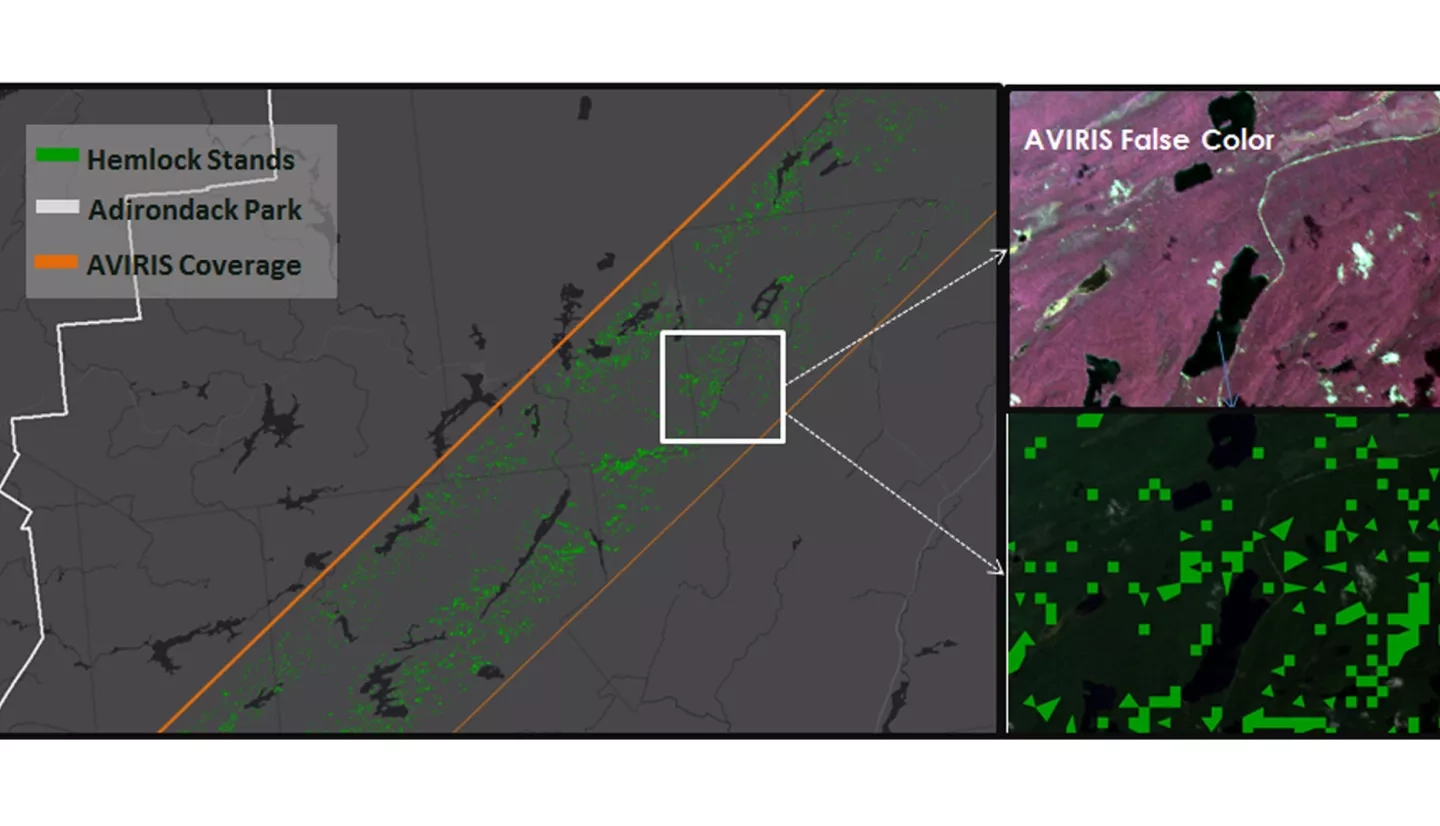
The hemlock woolly adelgid, Adelges tsugae (Annand), is an invasive species first identified on the East Coast of the United States in Richmond, Virginia in 1951. The pest has spread rapidly and has devastated eastern hemlock, Tsuga canadensis (L.) Carrière, populations from Georgia to Maine. Hemlock populations in the Adirondack Mountains and Tug Hill region of New York have been spared because the hemlock woolly adelgid cannot survive temperatures lower than -30° to -35° C. However, warming winter temperatures are placing these stands at risk. Eastern hemlock is a keystone species in eastern forests, as it is slow growing, long-lived, shade tolerant, and provides habitat for a variety of wildlife. Existing eastern hemlock stands in Adirondack Park and Tug Hill State Forest were mapped using a combination of spectral vegetation indices based on Earth observations, including Airborne Visible and Infrared Imaging Spectrometer (AVIRIS), Landsat 8 Operational Land Imager (OLI), and Sentinel-2 Multispectral Instrument (MSI). Ancillary datasets, such as iMapInvasives, were used to provide confirmed hemlock locations for ground truthing and validation. Maximum Entropy was used to predict hemlock woolly adelgid habitat suitability in this region of upstate New York and the risk of hemlock woolly adelgid infestation in 2025. The Adirondack Park Invasive Plant Program (APIPP) will use the maps of uninfected eastern hemlock stands and risk models in order to inform preventative programs aimed at the invasive pest.



